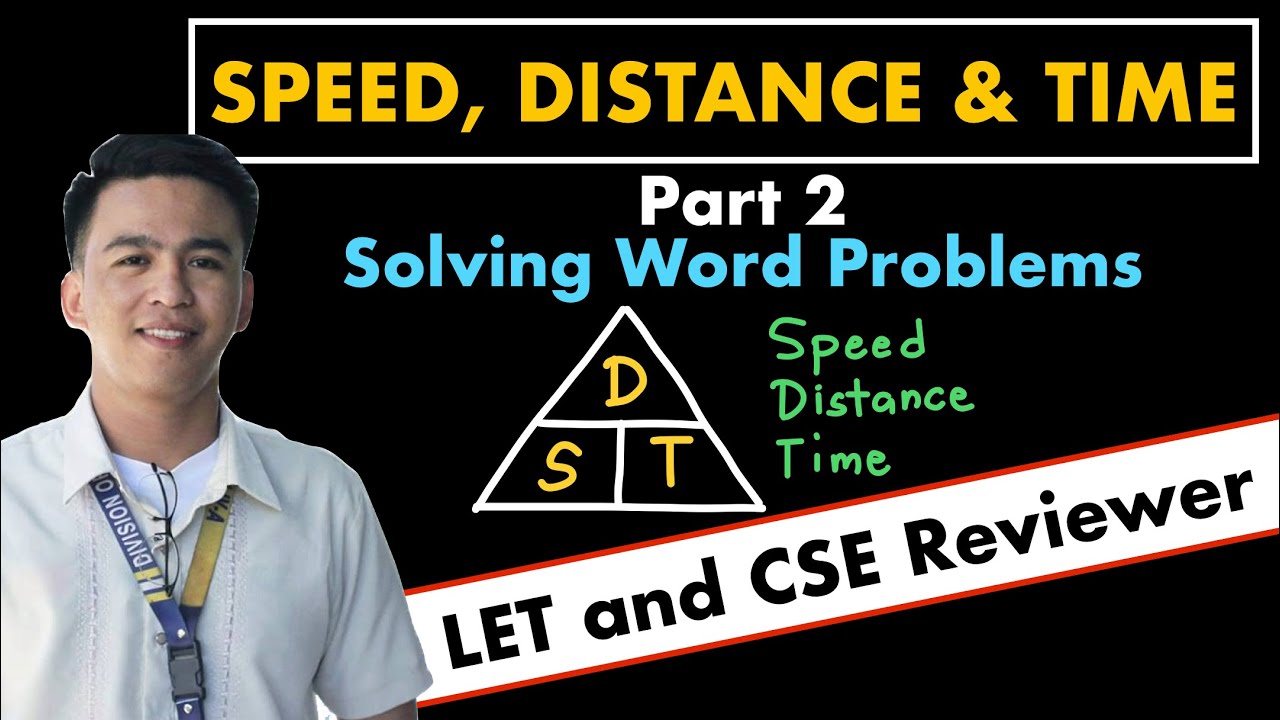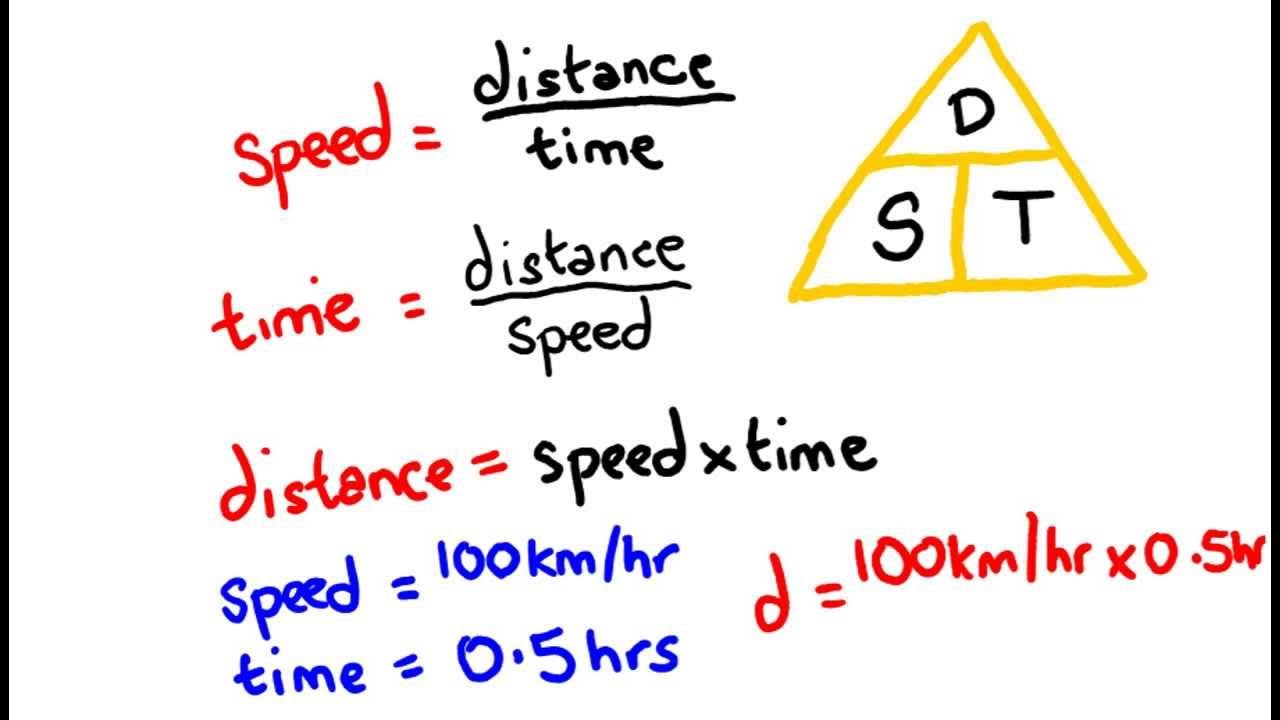How to Solve Distance Rate Time Word Problems (D=RT)
TLDRIn this engaging video, Alyssa from 'You Can Learn Math' tackles the often intimidating distance formula, which is a common challenge in math education. She breaks down the concept by addressing three typical problem scenarios involving two moving objects, such as cars or trains, and explains how to calculate the time or distance involved in their paths. Using the fundamental formula 'distance equals rate times time,' Alyssa guides viewers through each problem with a step-by-step approach, including creating a chart for clarity. She also touches on a bonus problem involving a more complex situation with a boat and current or a plane with wind resistance, promising a detailed explanation in a follow-up video. The video is designed to demystify the distance formula and inspire confidence in solving related problems.
Takeaways
- 📚 The distance formula is a fundamental concept in math, often intimidating at first glance but essential for solving motion problems.
- 🚂 The distance formula is expressed as Distance = Rate × Time, which is the basis for solving various types of problems involving speed and time.
- 🛣️ In problems where objects move in opposite directions, the total distance traveled by both is the sum of their individual distances, which can be calculated using the formula.
- ⏱️ Time is a common variable in these problems, representing the duration of travel for the objects in question.
- 🚗 For objects starting at the same point and moving in opposite directions, the sum of the products of their rates and time equals the total distance apart.
- 🕒 When calculating time, it's important to consider that both objects travel for the same amount of time, even if their speeds differ.
- 🚦 In problems where objects start at different times but from the same point, the time variable must account for the difference in start times to find when they meet or are a certain distance apart.
- 🚘 In scenarios where two objects are moving towards each other from different starting points, the sum of the products of their rates and the same time equals the distance between the starting points.
- 🔢 It's crucial to remember that when solving these problems, you should not directly use the total distance for individual calculations unless specified.
- ✅ Practicing and understanding the formula and its application is key to solving distance, rate, and time problems accurately.
- 📈 For more complex problems involving factors like wind or current, additional considerations are necessary, which are covered in a follow-up video.
Q & A
What is the main topic of the video?
-The main topic of the video is the distance formula and its application in solving various types of problems involving rates and times.
What is the basic formula used to calculate distance?
-The basic formula used to calculate distance is Distance = Rate × Time.
In the first example, how are the two cars moving?
-In the first example, the two cars are moving in opposite directions, with one going due east at 50 miles per hour and the other going due west at 30 miles per hour.
What is the purpose of creating a chart in the video when solving the problems?
-The purpose of creating a chart is to organize the given information and variables in a clear and structured way, which helps in solving the problems more efficiently.
How long do the two cars in the first example take to be 280 miles apart?
-The two cars in the first example take 3 1/2 hours to be 280 miles apart.
In the second example, how do the two cars' starting times differ?
-In the second example, the first car starts at 8 a.m., while the second car starts one hour later, at 9 a.m.
What is the rate of the second car in the second example?
-The rate of the second car in the second example is 65 miles per hour.
How long does it take for the second car to catch up to the first car in the second example?
-It takes the second car 4 hours and 20 minutes to catch up to the first car.
In the third example, what is the combined rate of the two cars driving towards each other?
-In the third example, the combined rate of the two cars driving towards each other is 45 miles per hour plus 55 miles per hour, which equals 100 miles per hour.
How far apart are the two cities in the third example?
-The two cities in the third example are 200 miles apart.
What is the time at which the two cars pass each other if they leave the cities at 10 a.m. in the third example?
-If the two cars leave the cities at 10 a.m. in the third example, they pass each other at noon, which is 12 p.m.
What type of additional problem is mentioned for a future video?
-The additional problem mentioned for a future video involves situations where there is a current affecting a boat or wind affecting a plane, which changes the rate of movement in different directions.
Outlines
😀 Introduction to the Distance Formula
Alyssa introduces the concept of the distance formula, which may initially seem daunting but is fundamental to solving various types of motion problems. She uses a humorous example involving two trains to illustrate the complexity of such problems. Alyssa emphasizes the basic formula: distance equals rate times time, and explains its application in a simple scenario of driving at a constant speed for a certain duration.
🚗 Solving the First Car Distance Problem
The first problem involves two cars leaving from a central point, one traveling east at 50 mph and the other west at 30 mph. Alyssa demonstrates how to use the distance formula to find out after how many hours they will be 280 miles apart. She employs a chart method to organize the information and solve the equation, resulting in the cars being 280 miles apart after 3.5 hours.
🕒 Catching Up with the Second Car Problem
The second scenario describes two cars starting from the same point at different times, with the first car traveling at 50 mph and the second car, starting an hour later, traveling at 65 mph. Alyssa uses the distance formula to determine the time it takes for the second car to catch up to the first. By setting the distances equal to each other and solving the equation, she finds that the cars will meet at 12:20 p.m.
🔁 Cars Passing Each Other Problem
The third problem involves two cars starting from two different cities and driving towards each other, with one car going 45 mph and the other 55 mph. Alyssa shows how to calculate the distance between the two cities given that they pass each other after two hours of driving. She emphasizes the importance of not assuming that each car travels the total distance between the cities and solves the problem to conclude that the cities are 200 miles apart.
📝 Conclusion and Upcoming Bonus Problem
Alyssa concludes the video by mentioning a bonus problem that will be covered in a follow-up video. This bonus problem will deal with more complex distance-rate-time scenarios, such as those involving wind resistance for planes or current for boats. She encourages viewers to like, share, and subscribe for more content and provides a link to the next part of the video in the description below.
Mindmap
Keywords
💡Distance Formula
💡Rate
💡Time
💡Collision
💡Cars
💡Central Location
💡Variable
💡Chart
💡Catch Up
💡Pass Each Other
💡Different Cities
Highlights
Alyssa introduces the distance formula, which is often intimidating at first glance but is fundamental to solving problems involving rates and time.
The basic formula for distance problems is distance equals rate times time, which is the foundation for all the examples discussed.
An interesting insight is that when calculating distance with a rate and time, the 'miles per hour' unit cancels out, leaving just 'miles'.
Alyssa uses a chart method to organize information for solving distance problems, which can help clarify the problem and prevent mistakes.
The first problem involves two cars leaving from a central location and driving in opposite directions, with the goal of finding when they are 280 miles apart.
By setting up an equation where the sum of the distances traveled by both cars equals 280 miles, Alyssa demonstrates how to solve for the unknown time variable.
The solution to the first problem reveals that the cars will be 280 miles apart at 1:30 p.m., 3.5 hours after they started driving.
In the second problem, two cars start from the same point but at different times, aiming to find when the faster car catches up to the slower one.
Alyssa explains that even though the cars start at different times, the time variable represents the duration each car has been driving when they meet.
The second problem is solved by setting the distances traveled by both cars equal to each other, leading to a calculation that determines they meet at 12:20 p.m.
The third problem involves two cars starting from two different cities and driving towards each other, aiming to find the distance between the cities.
By using the distance formula with the given rates and time, Alyssa shows that the two cities are 200 miles apart.
Alyssa emphasizes the importance of not assuming that each car travels the total distance between the cities, which is a common mistake.
In a variation of the third problem, if the cities are 200 miles apart and the cars leave at the same time, Alyssa shows that they pass each other after 2 hours.
A bonus problem is mentioned, which will be covered in a follow-up video, focusing on more complex scenarios like boats in a current or planes with headwinds and tailwinds.
Alyssa encourages viewers to like, share, and subscribe for more educational content on math and problem-solving.
The video concludes with a reminder to check out the follow-up video for the bonus problem, which will be linked in the video description.
Transcripts
Browse More Related Video

Related Rates - Distance Problems - Application of Derivatives

Speed, distance and time

Solving Word Problems SPEED, DISTANCE and TIME | LET and Civil Service Exam Reviewer

Distance Speed Time Word Problem Time to Overtake

Velocity - speed, distance and time - math lesson

How to Calculate Force | plus | How to Calculate Distance | Physics |
5.0 / 5 (0 votes)
Thanks for rating: